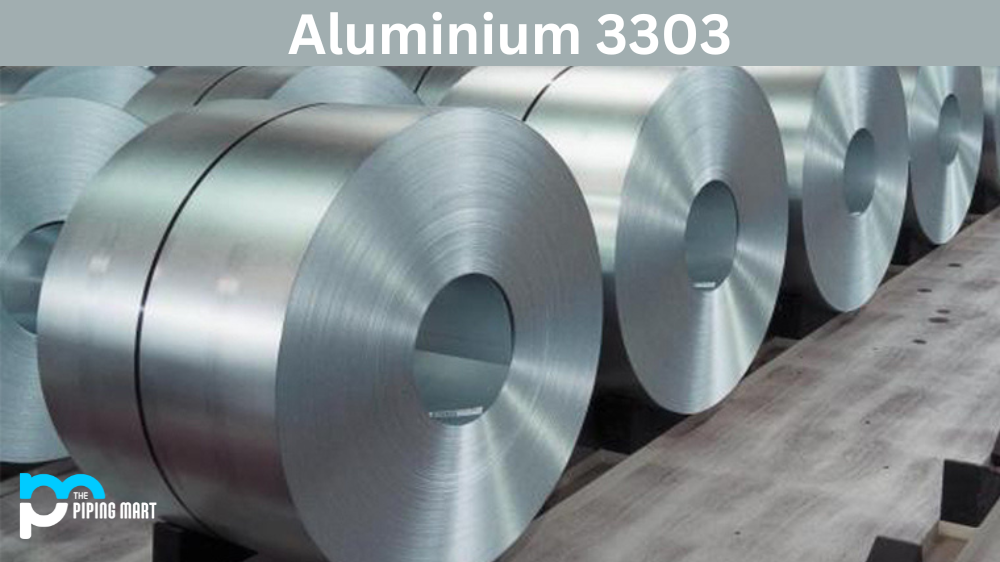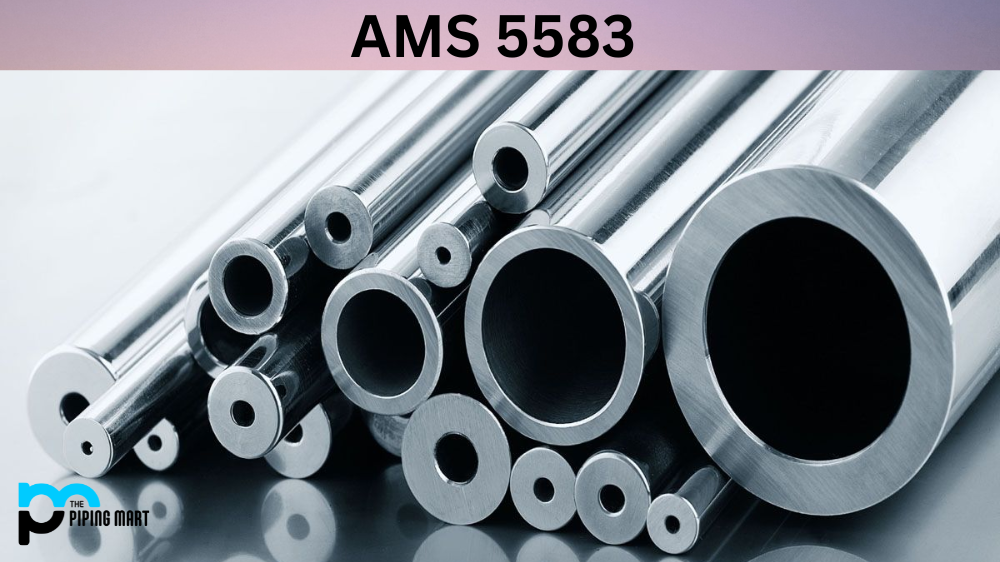Aluminum 3303 is an alloy that is used in many industries for its strength and durability. This alloy is composed of aluminium, manganese, and silicon and offers excellent corrosion resistance, heat resistance, machinability, and weldability. In this blog post, we will discuss the composition of Aluminum 3303 as well as its mechanical properties, physical properties, uses, corrosion resistance properties, heat treatments, machining requirements, and welding techniques.
Composition
Aluminium 3303 consists of 0.6-0.7% copper (Cu), 0.2-0.6% manganese (Mn), 1-1.5% magnesium (Mg), 0-0.25% chromium (Cr), 0-0.25% titanium (Ti), 0-0.15% zinc (Zn) and balance aluminum (Al).
| Chemical Composition % | ||||||||||
| Si | Fe | Cu | Mn | Mg | Cr | Ga | Zn | Ti | Residuals | |
| 3303 | ≤0.60 | ≤0.70 | 0.05-0.2 | 1.0-1.5 | 0.2-0.8 | ≤0.05 | / | ≤0.10 | ≤0.10 | ≤0.15 |
Mechanical Properties
AL 3303 is a strong and durable metal with excellent tensile strength ranging from 310 MPa to 500 MPa depending on the tempering process used during manufacturing. The yield strength of this alloy can range from 250 MPa to 425 MPa depending on temperature treatment applied during production, and its hardness can range from 12 HB to 17 HB after cold working or other methods are used for hardening it further. It also has a good fatigue strength, making it suitable for use in applications requiring repeated bending or flexing, such as components in aircraft wings or similar structures where weight savings are important but durability is also required. Its elongation at break is 8%.
| Mechanical Properties | |||||
| Property | Value | ||||
| Tensile Strength | 110 MPa | ||||
| Yield Strength | 39 MPa | ||||
| Elongation | 23% | ||||
| Shear strength | 69 MPa | ||||
Physical Properties
The density of grade 3303 is 2.77 g/cm3. At the same time, the thermal conductivity of this alloy ranges from 150 W/mK to 200 W/mK, making it a good choice for applications that require good heat transfer abilities, such as heat exchangers or radiators where high temperatures are involved. Still, weight also needs to be kept low because of space constraints or other considerations like fuel economy in vehicles etc. Its electrical resistivity ranges from 25 micro ohms per meter at room temperature, which increases slightly with increasing temperatures up to about 30 micro ohms per meter at higher temperatures making it a good choice for electrical applications where low resistivity combined with low weight is desired, such as electric motors or power electronics components like power transistors etc.
Uses
Alloy 3303 is a special alloy that has numerous uses in modern industry. It is particularly useful for its strength, electrical conductivity, and corrosion resistance. This makes it ideal for applications that require materials of considerable durability and reliability, such as aircraft and automotive components, hardware fasteners, office furniture hinges and electrical components. Additionally, Aluminium 3303 can be used in the production of kitchen appliances due to its non-magnetic properties and ease of manufacture. The lightweight nature of Aluminum 3303 also makes it convenient to work with, enabling engineers to create efficient and cost-effective products.
Corrosion Resistance
3303 aluminium is highly regarded for its excellent corrosion resistance properties. It offers superior protection against chloride pitting and stress cracking, making it a reliable choice for applications operating in corrosive environments. The material’s alloying elements create a thin but protective surface layer that shields the metal from external influences like oxygen, water, and salt spray that can cause rusting over time. Its inherent toughness allows it to withstand contact with many organic compounds and acids without sustaining damage. As such, Aluminium 3303 is an invaluable material for the production of structures and components exposed to weathering and chlorine-inhibited atmospheres like marine environments.
Heat Treatment
3303 alloy can be hardened through various heat treatments like solution annealing followed by quenching or age hardening processes, which involve heating the material up to specific temperatures followed by cooling it down quickly so that its internal structure changes resulting in improved mechanical properties like strength and hardness along with improved wear resistance too which makes this alloy suitable for use in applications requiring superior durability over long periods without needing frequent maintenance or replacement due to wear out effects caused by friction etc.
Machining
Aluminium 3303 can be machined easily using standard carbide tools, which offer good wear resistance even when cutting at high speeds due to its relatively soft nature compared to other metals like stainless steel etc. The surface finish obtained after machining depends on the tooling used, along with parameters like feed rate and cutting speed. Still, most operations should produce smooth surfaces with minimal scuffs, marks etc.
Welding
This alloy can also be welded using conventional welding techniques like TIG welding, MIG welding etc. However, care needs to be taken while doing so since aluminum tends to oxidize quickly when heated up, so preheating may be necessary before attempting any welding operations on this material if there are large areas involved since they take longer time than small parts due to their greater mass which absorb more energy during welding operations resulting in increased oxidation rates at elevated temperatures causing pitting defects on the welded surfaces unless preheat procedures are followed correctly beforehand.
Conclusion
Aluminium 3303 is a versatile alloy that offers great value thanks to its combination of mechanical strength and durability combined with good machinability, weldability and corrosion resistance, making it suitable for use in many industries, including automotive, aerospace, marine construction, industrial machinery manufacturing among others, where lightweight components, with superior performance characteristics, are required without compromising safety standards either due military applications where failure could have catastrophic consequences or civilian sectors where high-quality products need meet not only performance specifications but also environmental regulations regarding emissions levels etc. With all these factors taken into consideration together, it’s easy see why aluminum alloys such as Aluminium 3303 remain popular choices amongst engineers looking for cost-effective materials offering superior performance characteristics without compromising safety standards either way。
Meet Heer, a dynamic and driven writer learning tricks of her trade in the metal industry. With a background in Digital Marketing, Heer brings a unique perspective to her writing, sharing valuable insights. Apart from blogging she like reading and hiking.




